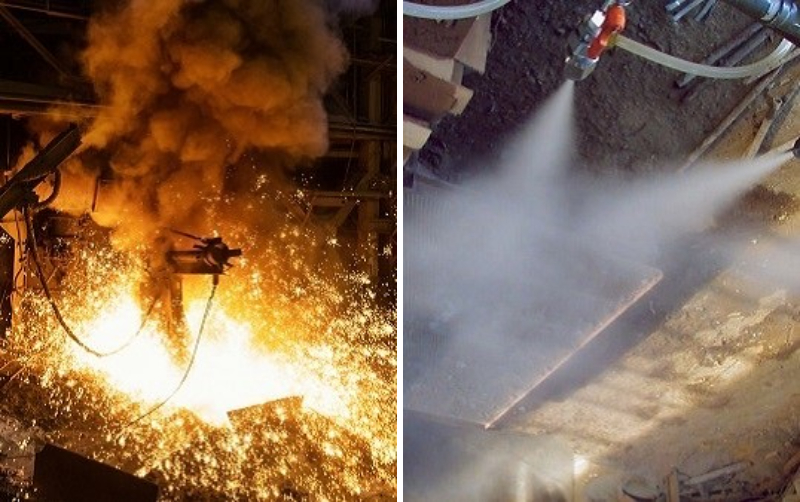
Dust Suppression at Blast Furnace Tapholes Using High-Velocity, High-Volume Fog

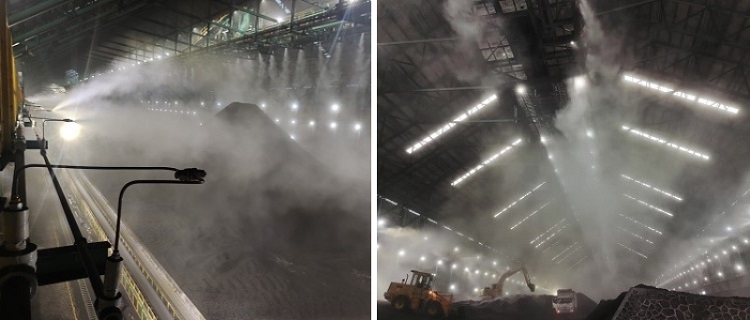
Solutions or Products Featured
in This Case Study

The coal storage area at a chemical plant faced ongoing problems with airborne dust escaping off-site into nearby surroundings. Wind-driven dispersion of the dust posed a serious threat to nearby residential areas, leading to environmental complaints and health concerns.
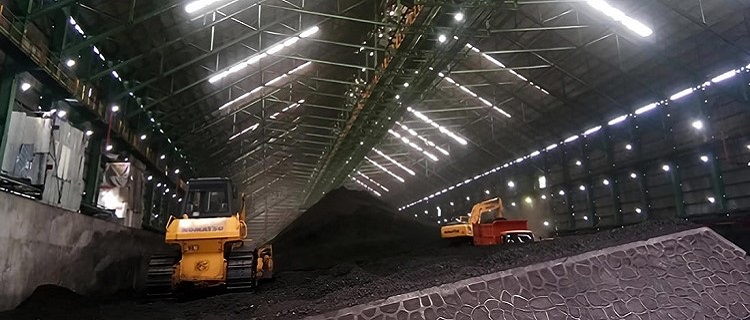
Traditional countermeasures, such as installing windbreak nets upwind and dust nets downwind, proved insufficient against fine particulate matter.
Though electrostatic precipitators offer a more effective solution, their high cost and space requirements often limit feasibility.
Water sprinkling, a commonly used method, poses risks of degrading coal quality and creating muddy conditions that compromise worker safety and operational efficiency.
Despite growing awareness of the issue, effective solutions remained limited. In many cases, companies were only prompted to act after receiving complaints or observing adverse health effects among workers.
Addressing these challenges, IKEUCHI proposed a dust suppression system using ultra-fine fog generated by spray nozzles—an approach proven effective across numerous global installations.
Rather than reacting to dust already dispersed off-site, the system focuses on proactively suppressing dust generation by maintaining a consistently humid environment within the storage area.
The fine fog generated by specialized spray nozzles helps airborne dust particles collide with water droplets and settle. IKEUCHI provides a complete system design—including nozzle selection, equipment configuration, and layout planning—tailored to site conditions and dust concentration.
The only utilities required from the customer are water and compressed air.
Unlike conventional water sprinkling, the system avoids surface flooding and mud formation. Compared to electrostatic precipitators, it is significantly more cost-effective and easier to install. Most importantly, it drastically reduces off-site dust dispersion.
Injecting ultra-fine water droplets in fog form into the air via spray nozzles allows them to gradually descend while dispersing throughout the space. As they fall, the droplets collide with airborne dust particles, capturing them through adhesion. The combined weight causes the dust to settle by gravity—a mechanism known as dust suppression by fog.
Achieving optimal suppression requires matching the droplet size to the size of the dust particles. If the droplets are too large, dust can pass between them without being captured, significantly reducing effectiveness.
IKEUCHI’s proprietary atomization technology utilizes pneumatic spray nozzles to generate water droplets in the 20–50 μm range. This precision droplet sizing enables highly efficient dust suppression across various industrial environments.
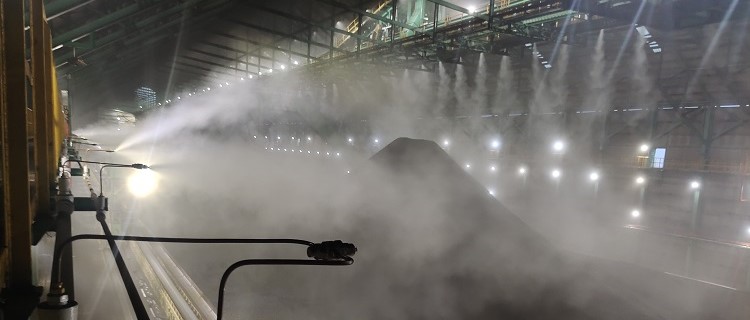
Deploying the fog-based dust suppression system resulted in rapid and visible improvements. Within 10 minutes of activation, the fog filled the upper airspace and gradually descended. Concurrently, airborne dust visibly decreased.
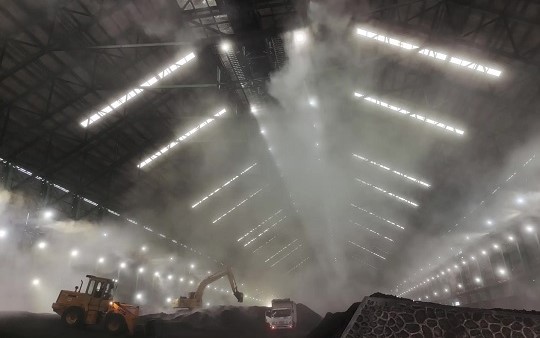
The amount of dust escaping beyond the premises was significantly reduced, leading to the elimination of complaints from local residents and regulatory authorities. Improved air quality also addressed health concerns for on-site personnel.
The system’s effectiveness has earned high praise from on-site operators.
KEUCHI’s nozzle-based solutions continue to support cleaner, safer work environments while actively contributing to the reduction of air pollution.